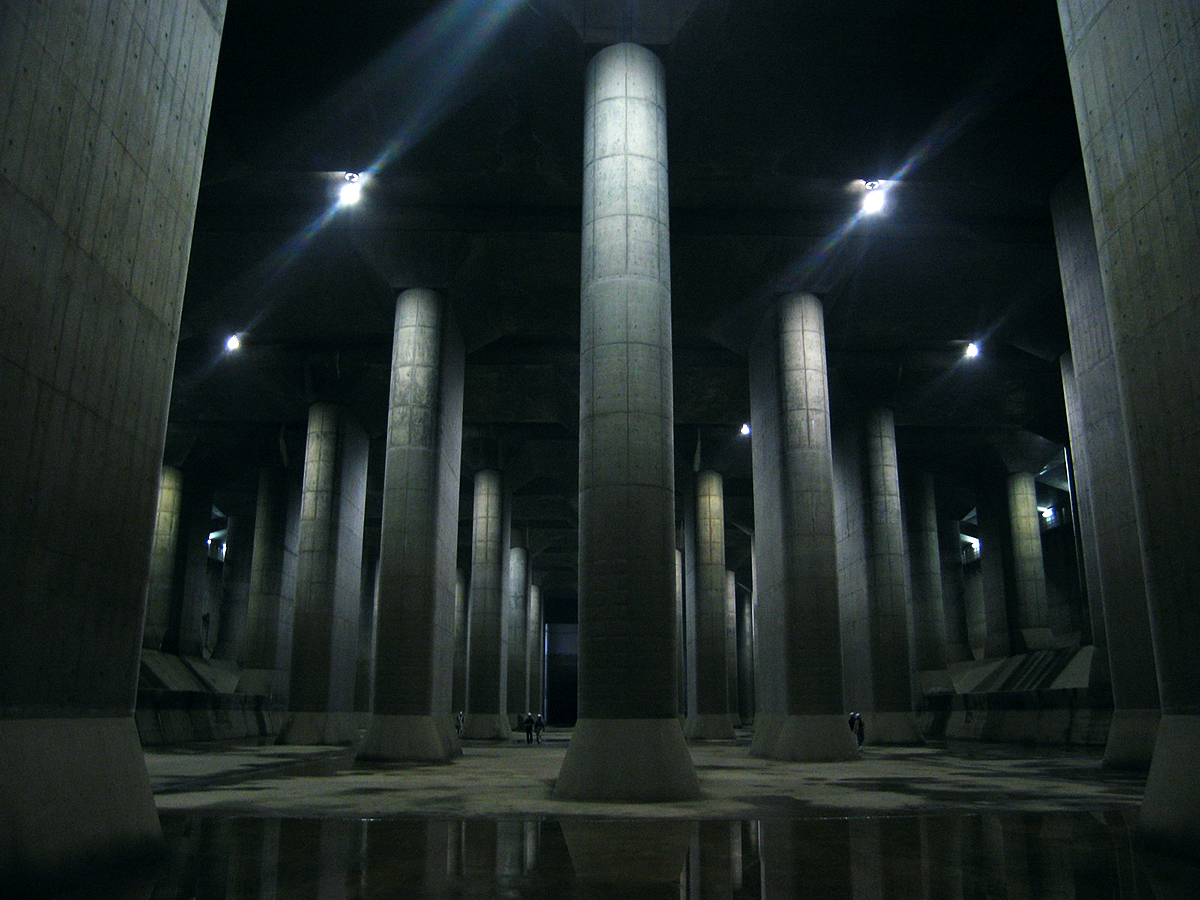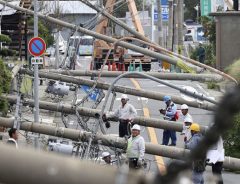
Source: Dddeco at ja.wikipedia [CC BY-SA 3.0 (http://creativecommons.org/licenses/by-sa/3.0/)]
Typhoon’s Toll on Tokyo Likely Mitigated by Massive Underground Flood Diversion Tank
- Tags:
- Engineering / flooding / Kasukabe / Metropolitan Area Outer Underground Discharge Channel / Typhoon / Undergound Temple
Related Article
-

[VIDEO] Flood Wall Collapses In Ibaraki, Japan Causing A Havoc
-

In the Land of Typhoons, Why Are Power Poles Slow to Disappear in Japan?
-

Photographer captures stunningly gorgeous photoshoot of Tokyo Station during a typhoon
-

Japanese Amphibious Gill Garment Aims To Let Humans Breathe Underwater
-

Panic Buyers Brace For Great Japanese Potato Chip Apocalypse
-

Japan Develops Wearable Chair To Help People, Especially Surgeons, Stand For Long Periods Of Time


As recovery efforts continue in the wake of the massive Typhoon Hagibis which pummeled central and eastern Japan last weekend with torrential rains and powerful winds, causing 12 rivers to overflow, the Tokyo area is still assessing its damage. Although many areas outside of Tokyo, such as a 5-kilometer stretch of the Chikuma River in Nagano where floodwaters topped 4 meters, fared far worse than Tokyo, the metropolis did not emerge unscathed.
According to the Tokyo Shimbun, the Tama River which runs through Tokyo, as well as several of its tributaries overflowed, causing inundations and landslides in Setagawaya Ward, as well as Tachikawa, Hino, Hachioji, Machida and Ome cities.
Nevertheless, Tokyo may have suffered from far more serious flooding had it not been for a "hidden hero" which helped divert flood waters.
The "Underground Temple"
The world's largest underground flood diversion facility, the Metropolitan Area Outer Underground Discharge Channel 首都圏外郭放水路 is a feat of engineering. Buried deep under Kasukabe, a town in Saitama Prefecture about 20 miles from central Tokyo, the system of tunnels and central tank runs 50 meters deep and 6.5 kilometers long, and comprises of five massive collection silos, each of which could fit the Statue of Liberty. The massive central tank, with its endless pillars and astonishing dimensions, has earned itself the name of "Underground Temple" 地下神殿.
Dddeco at ja.wikipedia [CC BY-SA 3.0], via Wikimedia Commons
Built between 1992 and 2006, the Metropolitan Area Outer Underground Discharge Channel, or "G-Can Project" for short, collects waters of five small to mid-sized rivers of the region, regulates the water pressure, and safely diverts them to the Edo River which flows into Tokyo Bay, pumping out water at a rate of 200 tons per second. As a result, it effectively prevents Tokyo's streets from turning into rivers during storms or periods of prolonged rain, which is exactly what it did during Typhoon Hagibis.
G-Can to the rescue during Typhoon Hagibis
According to a report by JB Press, the G-Can Project has repeatedly come to Tokyo's aid. For example, it successfully diverted 1,900 cubic meters of water in 4 days during the last major deluge in 2015, when two typhoons struck Japan in short succession. Typhoon Hagibis, however, brought unprecedented rainfall in a very short time span, truly testing the G-Can Project's mettle. Analayzing the data collected during Typhoon Hagibis reveals that between 7 PM on October 12th and 2pm on October 14th, the G-Can Project diverted 1,700 cubic meters of water. In other words, it handled nearly the same amount of water as in 2015 in almost half the time.
Open for visits
The G-Can Project is open for visits, so you can explore the "Underground Temple" and enjoy this marvel of modern engineering and construction for yourself. Visits cost 3,000 JPY and require a Japanese-speaker to accompany you if you don't speak the language. You can apply from their official website here.
For more information about the Metropolitan Area Outer Underground Discharge Channel, see this page on the Edogawa River Office's website.